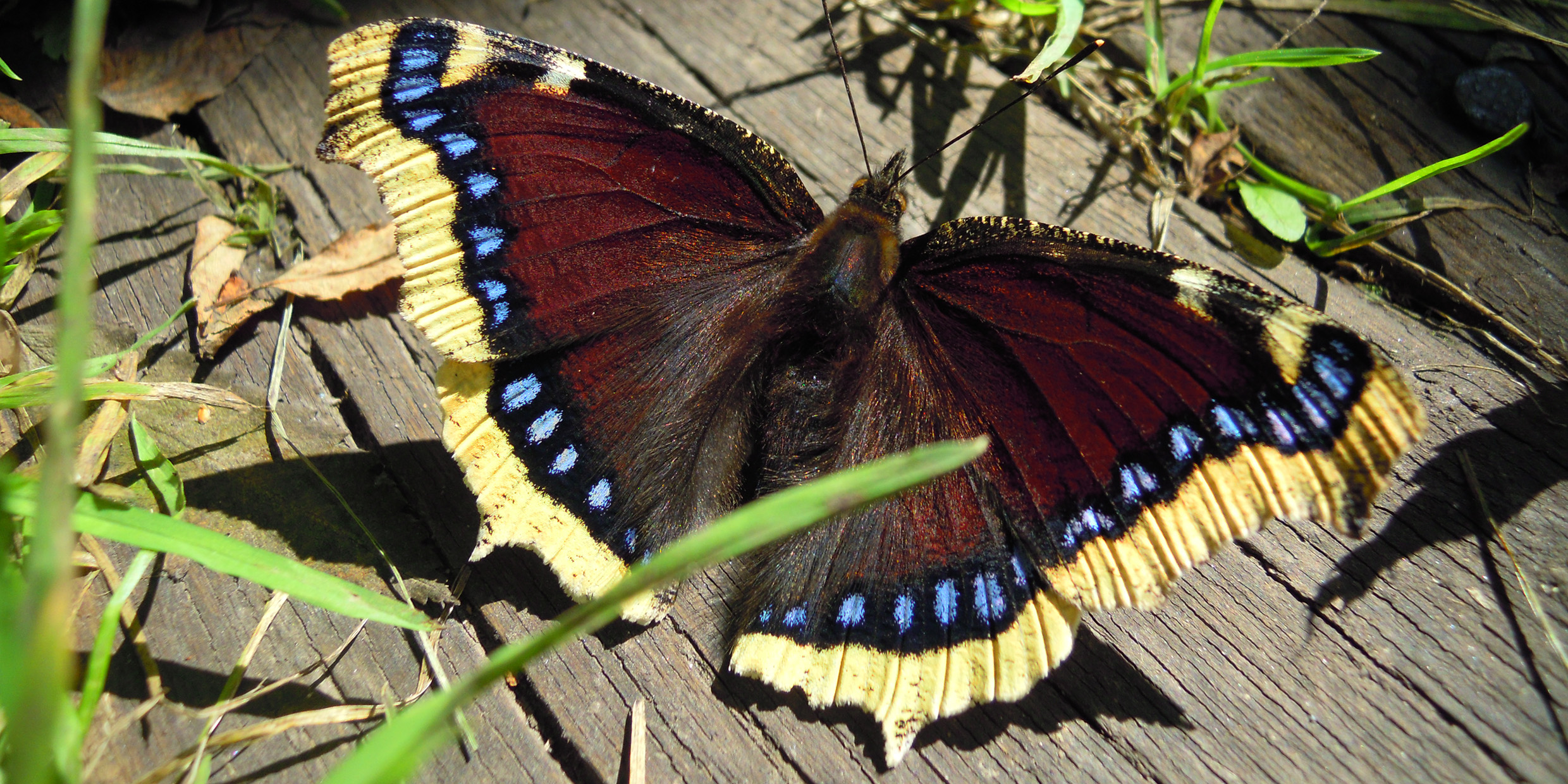Originally published 19 March 1984
Only a daredevil makes metaphors. To make a metaphor is to walk a tightrope, to be shot out of a cannon, to do aerial somersaults without a net. The trouble with metaphors is you never know when they’ll let you down. You turn a somersault in midair, you reach for the trapeze, and suddenly it’s not there.
Take the butterfly, for instance. Surely a safe bet for a metaphor. The delicacy of beauty. The fragility of life. The Oxford English Dictionary gives half a page to the metaphorical use of the word “butterfly” to represent all that is “vain, giddy, inconstant, and frivolous.” Even Shakespeare does it: “…for men, like butterflies, show not their mealy wings but to summer.” There you go, sailing through the air, the daring young man on the flying metaphor, when…
I was sailing along on my bicycle that first warm weekend of February when…bam…I collided with spring’s first mourning cloak. Surely there is no more beautiful creature under New England’s sun than this splendid butterfly. The mourning cloak is one of the largest of our butterflies. Its wingspan can reach three and a half inches. The wings are a deep maroonish black, speckled with blue spots and a broad yellow band. In spite of its somber name, the mourning cloak has always impressed me as one of the gayest harbingers of spring. Our collision ushered in the season.
A few minutes later, its wings more thoroughly warmed by the February sun, this little flier might have avoided the collision. But its fuselage was still caked with sleep, its struts and hinges stiff, as it lurched into my path. I felt the brittle scales brush against my cheek, black mica edged in brilliant yellow. Where did this delicate thing come from in mid-February?
Toughing it out
The mourning cloak is the most prominent of the butterflies that winter over in New England as an adult. Other species pass the winter in the larval stage, or sealed up tight in egg cases. The colorful monarch migrates to a warmer climate. But when snows fly, the mourning cloak seeks out a hollow tree or a pile of dead leaves and hibernates like a bear.
The mourning cloak does not have the bear’s thick fur or the bear’s layers of fat. How this fragile slip of a thing survives the killing cold seems to me to be something of a miracle. But every year, on those first warm days of spring, sometimes while snow still lies on the ground, the mourning cloak flutters forth in full black and yellow winged beauty. Before other insects have hatched as grubs, the mourning cloak takes to the air. It wins our hearts the way General Nathan Bedford Forrest won battles for the Confederacy: it “gets there firstest with the mostest.”
The mourning cloak butterfly produces two broods each year. Adults that hibernate through the winter lay eggs in the spring on the twigs of willows, elms and poplars. By May, the hibernators have disappeared. The first new brood appears in June and flies throughout the summer. One finds them in the deciduous woods, especially on hillsides, cruising six feet or so above the ground, flapping a few times, then sailing, flapping and sailing. The second brood of mourning cloaks appears in the fall and flies until winter forces them into hibernation.
Beauty in all stages
The caterpillar of the mourning cloak comes wrapped in black velvet decorated with white and red dots. It constructs a brown pupal case tipped with red. In all of its stages, the mourning cloak seems determined to put on a pretty face. In England, where it is prized as a rare migrant from the continent, the mourning cloak is known as the Camberwell Beauty, which seems to me an altogether more appropriate name for so lovely a creature.
By that name, in Europe too, the mourning cloak announces spring. I shall not forget a lovely passage in Nabokov’s autobiography, recalling the first blush of young love in St. Petersburg in the spring of 1916, “and a Camberwell Beauty, exactly as old as [his] romance, sunning its bruised wings, their borders now bleached by hibernation, on the back of a bench in Alexandrovski Garden.”
Winter in St. Petersburg is surely more brutal than winter in New England. And yet, the mourning cloak survives there too, sleeping in a hollow tree, with wings as thin as tissue paper bravely folded against the bitter cold, to be somehow miraculously revived by the first warm days of spring, to treat the frolickers in public gardens to a fine glimpse of summer’s beauty.
And there goes the metaphor. Beauty is fragile? Life is fleeting? Not at all. Beauty, it turns out, is tough, and life is well-nigh impossible to extinguish. The mourning cloak proves it.



